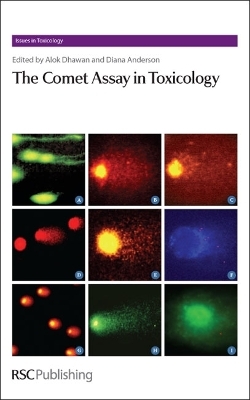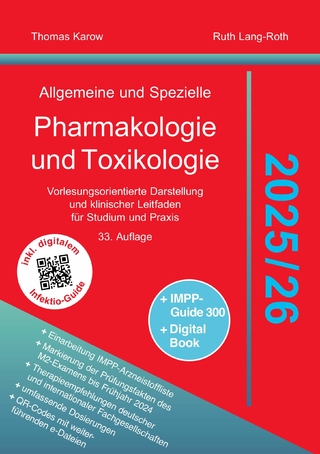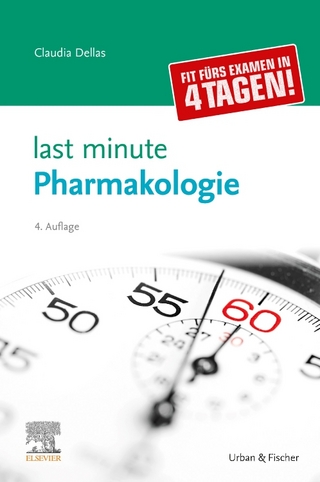
Comet Assay in Toxicology
Royal Society of Chemistry (Verlag)
978-0-85404-199-2 (ISBN)
The vast number of chemicals existing or being added into the environment, have globally aroused great concern regarding their adverse effects in human population. Development and validation of sensitive and better test systems which can assess the adverse effects of chemicals at an early stage for intervention strategies to be implemented in time is currently in progress. This book documents the latest research and showcases the versatile, state-of-the-art technique - the Comet assay - in the field of modern toxicology. The assay is a simple, sensitive rapid and visual technique for the quantitative and qualitative assessment of DNA damage in single cells. The Comet Assay in Toxicology is the first book of its kind to be devoted exclusively to the Comet assay and its applications as an important tool in modern toxicology. This multi-author book will serve as both a reference and a guide to investigations in the biomedical, biochemical and pharmaceutical sciences. Written by investigators from the fields of genetic toxicology and human epidemiology, the authors have first-hand knowledge from their chosen sub-specialities and are active contributors to the peer-reviewed scientific literature. The book is divided into five major sections, reflecting the range of interest in the exploitation of this assay. The book's scope begins with an introduction section reviewing its genesis for those new to the technique and the current knowledge of the various fields in which it finds wide acceptance. This section sets the scene by explaining why the assay has become the most sensitive and sought after assay in modern toxicology. Next is a whole section that considers various procedures being followed to assess different types of DNA damage in various cell types and is contributed by experts in the respective fields. The third section puts together the specific applications of the assay in the diverse fields ranging from genetic toxicity testing to human monitoring, and environmental toxicology. The fourth section consists of the guidelines and recommendations for the conduct of the assay in in vitro and in vivo systems, based on the recommendations of the International Workgroups on genotoxicity test procedures. Finally, the book draws to a close with an assessment of the statistics used for the understanding of the data generated by the assay. This is a unique reference book as it provides the scientific community with the advances in Comet assay as well as its applications. It also incorporates a detailed section with instant and comprehensive information on the procedure of the assay and the latest protocols being used worldwide as well as statistical analyses to be followed. The book is aimed at students as well as scientists in the area of molecular epidemiology and genetic toxicology.
Professor Alok Dhawan currently holds the position of Senior Assistant Director at the Indian Institute of Toxicology Research, Lucknow, India. He was awarded the Young Scientist Medal in Biomedical Sciences by the Indian National Science Academy in 1993. He was also awarded with the coveted CSIR Young Scientist Award in Biological Sciences in 1999 by the Council of Scientific & Industrial Research, India. The Indian Council of Medical Research also conferred its Shakuntala Amir Chand prize on Professor Dhawan for his contributions in the area of neuro- and geno- toxicology. He was elected as Vice President - Environmental Mutagen Society of India in 2006. He is also an elected fellow of the Society of Toxicology (India), and a member of various scientific societies in India as well as a member of the Asian Association of Environmental Mutagen Societies, Japan, and the United Kingdom Environmental Mutagen Society. He has published 67 papers in peer reviewed journals and has also has been the Associate Guest Editor of a special issue of Teratogenesis, Carcinogenesis and Mutagenesis journal published by Wiley-Liss, Inc, U.K in 2003 as well as Guest Editor of a special issue of the Nanotoxicology journal in 2008. He is actively involved in developing and establishing alternate animal models and substitute technologies for toxicity evaluation as well as in identifying peripheral biomarkers of exposure, effect and susceptibility to xenobiotics. Professor Dhawan is currently working in the area of nanomaterial and in silico toxicology. Professor Diana Anderson currently holds the Established Chair at the Department of Biomedical Sciences at the University of Bradford, UK and is Research Co-ordinator for the Department. In 1974, Professor Anderson was appointed as Head of Mutagenesis Studies at ICI's Central Toxicology Laboratory and she joined BIBRA International in 1981 as Head of Genetic and Reproductive Toxicology and became Assistant Director and Group Forum Co-ordinator in 1987. In 1992, she became Senior Associate and Co-ordinator of External Affairs at BIBRA. She has served on the editorial board of 8 international journals, has over 300 publications, has edited/authored 6 books and guest-edited 9 special issues of 4 international journals. She has been/is Series Editor of books in Current Toxicology for John Wiley and Sons and Issues in Toxicology for the Royal Society of Chemistry. As an active Committee member, she has been Vice-President of the Institute of Biology and is Chair of the Scientific Committee of the International Association of Environmental Mutagen Societies. New research laboratories in India and Korea have been established with her help under the auspices of the British Council and UNIDO. She has organised both national and international meetings and is/was a member of various national (e.g. MRC Advisory Board and Veterinary Products Committee) and international committees, including the European Union Scientific Committee for Animal Nutrition (SCAN) and is a consultant for many international organisations, such as the WHO, NATO, TWAS, UNIDO and the OECD.
Preface;
Part I: Genesis of Comet assay;
Part II: Various procedures for the Comet assay;
Oxidative damage;
Water disinfection by-products;
Comet assay in Plants;
Double Strand;
Breaks in bacteria;
Comet - FISH;
Double strand breaks (DSBs) - radiation/challenge assay - Radiation;
Apoptosis;
Multiple mouse organs;
Part III: Applications of Comet assay;
Dietary intervention studies;
Comet assay in Mussels;
Exercise;
Arsenic;
DSBs - radiation/challenge assay - Radiation;
In vivo Comet assay;
In vitro parallelogram approaches;
Photobiology;
Comet assay in sperm;
Comet assay in Human monitoring;
Part IV: Guidelines for comet assay;
In Vitro And In Vivo Guidelines for the Comet Assay;
In vivo Guidelines for Comet;
Part V: Image analysis and Statistics;
Models for image analysis;
Statistics in comet assay
| Reihe/Serie | Issues in Toxicology ; Volume 5 |
|---|---|
| Verlagsort | Cambridge |
| Sprache | englisch |
| Maße | 156 x 234 mm |
| Gewicht | 1866 g |
| Themenwelt | Studium ► 2. Studienabschnitt (Klinik) ► Pharmakologie / Toxikologie |
| Naturwissenschaften ► Biologie ► Genetik / Molekularbiologie | |
| Naturwissenschaften ► Chemie ► Analytische Chemie | |
| ISBN-10 | 0-85404-199-0 / 0854041990 |
| ISBN-13 | 978-0-85404-199-2 / 9780854041992 |
| Zustand | Neuware |
| Informationen gemäß Produktsicherheitsverordnung (GPSR) | |
| Haben Sie eine Frage zum Produkt? |
aus dem Bereich


